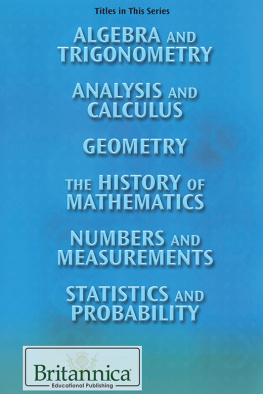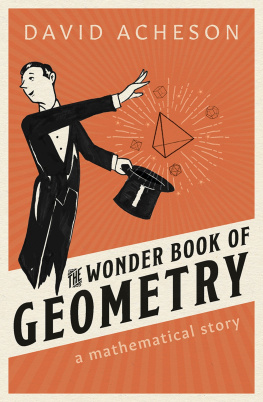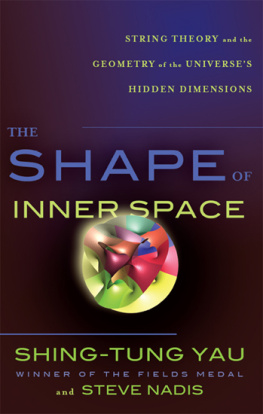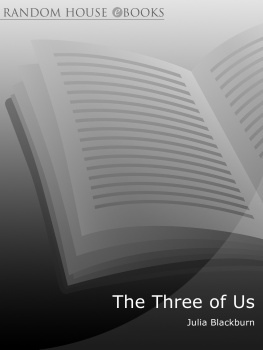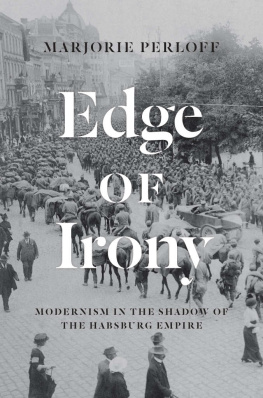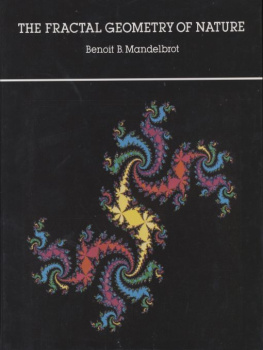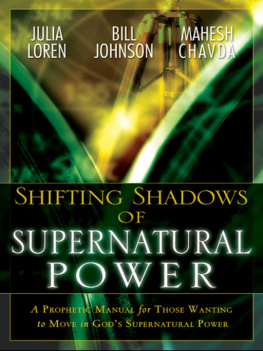Julia E. Diggins - String, Straight-edge and Shadow: The Story of Geometry
Here you can read online Julia E. Diggins - String, Straight-edge and Shadow: The Story of Geometry full text of the book (entire story) in english for free. Download pdf and epub, get meaning, cover and reviews about this ebook. year: 2018, publisher: Floris Books, genre: Religion. Description of the work, (preface) as well as reviews are available. Best literature library LitArk.com created for fans of good reading and offers a wide selection of genres:
Romance novel
Science fiction
Adventure
Detective
Science
History
Home and family
Prose
Art
Politics
Computer
Non-fiction
Religion
Business
Children
Humor
Choose a favorite category and find really read worthwhile books. Enjoy immersion in the world of imagination, feel the emotions of the characters or learn something new for yourself, make an fascinating discovery.
- Book:String, Straight-edge and Shadow: The Story of Geometry
- Author:
- Publisher:Floris Books
- Genre:
- Year:2018
- Rating:3 / 5
- Favourites:Add to favourites
- Your mark:
- 60
- 1
- 2
- 3
- 4
- 5
String, Straight-edge and Shadow: The Story of Geometry: summary, description and annotation
We offer to read an annotation, description, summary or preface (depends on what the author of the book "String, Straight-edge and Shadow: The Story of Geometry" wrote himself). If you haven't found the necessary information about the book — write in the comments, we will try to find it.
String, Straight-edge and Shadow: The Story of Geometry — read online for free the complete book (whole text) full work
Below is the text of the book, divided by pages. System saving the place of the last page read, allows you to conveniently read the book "String, Straight-edge and Shadow: The Story of Geometry" online for free, without having to search again every time where you left off. Put a bookmark, and you can go to the page where you finished reading at any time.
Font size:
Interval:
Bookmark:
To Maggie, Peter, Marijo and May, and all the children whom I have taught whose interest, enthusiasm and enquiring minds made me want to write this book.
But by the beauty of shape I want you to understand not what the multitude generally means by this expression, like the beauty of living beings or of paintings representing them, but something alternatively rectilinear and circular, and the surfaces and solids which one can produce from the rectilinear and circular with compass, set square and rule. For these things are not like the others, conditionally beautiful, but are beautiful in themselves.
~ Plato
The string, the straight-edge and the shadow they are easy to find almost anywhere. A string can usually be found in a childs pocket; a straight-edge in a desk drawer. Shadows are constant companions on a sunny day.
Yet these are also three wonderful tools. Using them alone, the ancients discovered the ideas and constructions of elementary geometry more than twenty centuries ago. It was all done with just string, straight-edge and shadows. And that is the subject of this story.
Nowadays, people build bridges that span the Golden Gate or the Firth of Forth. They make planes that go six times faster than the speed of sound, submarines that circle the globe without surfacing, missiles that reach outer space. They drill oil wells deeper than the height of Mount Everest. They have harnessed the power of the tiny atom, and placed people in orbit around the earth. But behind these modern wonders lies a long history packed with beauty, adventure and struggle.
Through the ages, people have searched to find the secrets of the universe. As these secrets were learned, they were written down in mathematical symbols. Today the search for secrets goes on: the mystery of the universe is still unfolding. Even the huge telescope at Mount Palomar is only a tiny window into a vast unknown, and when we finally travel to the moon and planets, there will be other worlds circling other stars for us to visit. In this unending search, mathematics has been a key from the very start.
A long, long time ago primitive humans observed the lines and curves and other forms of nature. They marvelled at them, and copied them as best they could.
Then, as need arose at the dawn of history, people learned to construct these lines, curves and forms accurately. They used the string to trace a circle, to lay off a right angle, to stretch a straight line. They used as a straight-edge anything with which they could draw a straight line. They came to realise that shadows are the suns handwriting upon the earth to tell the secrets of order in the universe.
By using these easy-to-find tools, the early civilisations learned how to tell time and direction. They designed their dwellings, temples and tombs, laid out their fields, and constructed irrigation ditches. They started to measure and record the apparent travels of the sun, moon and stars. They found ways of guiding their own travels across the sea and the trackless plains.
So, during thousands of years, the ancient peoples of the Near East built up a practical art that came to be known as geometry from geo, earth, and metria, measurement.
And then other peoples the Greeks turned from the tools to the rules.
Thinking people began to question and wonder why. They were still practical, but they were also interested in abstract rules about lines and curves and angles.
For centuries, many worked on these rules. Some studied beautiful geometric forms and tried to combine them with numbers into a pattern of the universe. One solved useful mechanical problems, such as how to raise water out of the hold of a leaky vessel. Others worked on useless puzzles, real brain-twisters. Out of their work came theoretical geometry.
The Greek geometers developed logical ways of thought. They discovered that the earth is a sphere, and they measured the girth of this sphere and the tilt of its axis. They discovered the properties of curves which they called the ellipse, the parabola, the hyperbola and the spiral curves that many centuries later were recognised as the paths of motion for bodies in space. They helped lay the foundations of modern science and invention.
But all that took an unbelievably long time and happened very, very slowly. Nowadays we live in an age of speed: new models of cars and mobile phones are perfected before the old ones are worn out or even paid for. So it may be hard to realise just how long it took to make those ancient discoveries.
For thousands of years, billions of humans have lived on the earth, and only a limited number of them have contributed to the development of geometry. Many of the facts are missing from the early part of their story. For the most faraway period, the records are gone and sometimes we have only a name or a legend.
So in this book, we shall try to tell a story instead only the highlights, the best characters, the dramatic incidents.
This will be the thrilling story of geometry in the ancient world, from the earliest prehistoric humans to the best-selling text in the history of mathematics, the Elements of Euclid. The story really is a thriller, with wonder and adventure and magic, and even a murder mystery!
As you read it, you will also see that it is a timeless tale, for the old discoveries are very much alive today. And all of them were made with just three wonderful tools: the string, the straight-edge and the shadow.
Geometry and Nature
Geometry itself if we trace its deepest roots goes back long before the discovery of its tools. It goes back even before the first observations of primitive man. In fact it goes way back to nature and life and a sixth sense that is in every one of us. This mysterious faculty can be called an inborn sense of mathematics.
Because we are all part of this immense universe, and are bound by its laws, we have a natural sensitivity to its order and beauty. All people are thinking parts of the universe, so they have used their sensitivity to translate these laws of order and beauty into mathematical language.
You can understand this sensitivity from your own personal experience. When you shook a rattle and recognised rhythm, or rolled a ball in your playpen and noticed the characteristics of a geometric form, your study of mathematics began.
If you ever have entered a room and adjusted the curtains or straightened a picture on the wall, you have used an innate sense of measurement. If you have stopped your ears to shut out strident or confusing sounds, you have sensed a desire for harmony.
When you first realised security in the fact that daylight and darkness follow a constant pattern, you experienced a sense of order in the universe.
All living things proclaim this order and have a sense of mathematics that comes naturally.
Birds, bees, whales and seals have a natural sense of direction and distance. Why does a flock of birds fly in angular formation and a family of ducks swim along the creek in the same angular form? How do birds fly back and forth with the seasons, finding their way to the same resting place? How do bees direct one another to the source of honey? They never studied the science of navigation yet they seem to know how to navigate.
In their building, animals show a sense of form. Bees construct their six-sided cells in the most efficient method of space-filling. But they never studied architecture. Spiders spin an almost perfect spiral web, yet they never studied engineering. Few birds fail to observe the principles of symmetry in the structure of a nest. And all animals seem to know that a straight line is the shortest distance between two points. It is almost as though they had instruments built into them.
Font size:
Interval:
Bookmark:
Similar books «String, Straight-edge and Shadow: The Story of Geometry»
Look at similar books to String, Straight-edge and Shadow: The Story of Geometry. We have selected literature similar in name and meaning in the hope of providing readers with more options to find new, interesting, not yet read works.
Discussion, reviews of the book String, Straight-edge and Shadow: The Story of Geometry and just readers' own opinions. Leave your comments, write what you think about the work, its meaning or the main characters. Specify what exactly you liked and what you didn't like, and why you think so.


